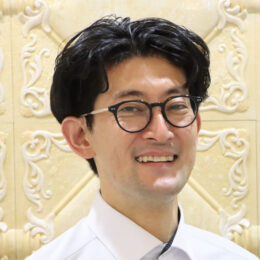Enlarged pores are a sign of skin aging caused by a combination of factors such as increased sebum secretion, decreased dermal elasticity, and post-inflammatory fibrosis. Conventional pore treatments have mainly focused on sebum suppression and the epidermis. Recently, though, treatment that improve skin function from within by remodeling the dermis have been attracting attention. Poly-L-lactic acid (PLLA), a biostimulator, is expected to activate fibroblasts and contribute to pore reduction and skin improvement. In particular, McCoom7, a PLLA preparation that promotes collagen production, is attracting attention as a skin remodeling therapy for enlarged pores.
- INDEX
The First Step in Treatment is Understanding the Structure of Pores
Understanding the structure of pores is key to treating enlarged pores. Pores are complex structures composed of hair follicles, sebaceous glands, sweat glands, surrounding epidermis and dermis. A superficial approach is therefore insufficient.
The causes of enlarged pores include enlarged sebaceous glands, post-inflammatory fibrosis, and decreased elasticity. In particular, aging and a decrease in collagen in the dermis weaken the skin’s support structure, making pores more noticeable.
Controlling Sebum and Restoring Elasticity Are Key
The main causes of enlarged pores are excessive sebum secretion and decreased skin elasticity. Effective treatments for sebum control include isotretinoin, PDT/PTT, 1450 nm laser, and Intradermal Botox. For women, lifestyle guidance is also important, as menstrual cycles and high-carbohydrate diets can also affect sebum production.
To improve elasticity, UV protection and topical retinoid to promote collagen production are recommended. In addition, treatments combining ablative lasers and RF needling have been reported to be highly effective in improving skin texture and reducing pore size.
Dermal Remodeling Using PLLA (poly-L-lactic acid)
PLLA is a biostimulator that promotes collagen regeneration in the dermis, and has recently gained attention for its pore improvement effects. “McCoom7” is a formulation that suppresses inflammatory reactions while continuously inducing collagen production, achieving an ideal balance of safety and efficacy.

When PLLA is injected into the skin, it induces macrophage polarization to M2 and promotes the secretion of TGF-β and IL-10. This activates collagen production, remodels the dermal tissue around the pores, and tightens the pores and restores elasticity.
Use and Effects of PLLA in Clinical Practice
Dr. Yoo Kyounghun performs combination treatments with basic preparations blending PLLA with normal saline and lidocaine, and adding Botox, PDRN, exosomes, etc. as needed. Additionally, cross-linked HA is mixed in to enhance moisture retention and improve the retention of active ingredients.
Clinical results showed that even young patients had significant improvement in pores and skin texture after 1-2 sessions, with particularly noticeable changes in areas with excessive sebum secretion and enlarged pores. Further, when combined with hair removal treatment, preventive effects against inflammation around the pores were also observed.
Summary: A Step-by-Step Approach to Successful Pore Treatment
Improving pores requires more than a single approach. A comprehensive strategy incorporating sebum control, improvement of dermal elasticity, and skin regeneration is essential. PLLA, particularly next-generation formulations such as McCoom7, are expected to play a central role in this regard in the future.
Many patients suffer from enlarged pores, and successful treatment is directly linked to a clinic’s reputation. We hope that our findings will help you develop more effective and safer treatment plans.



